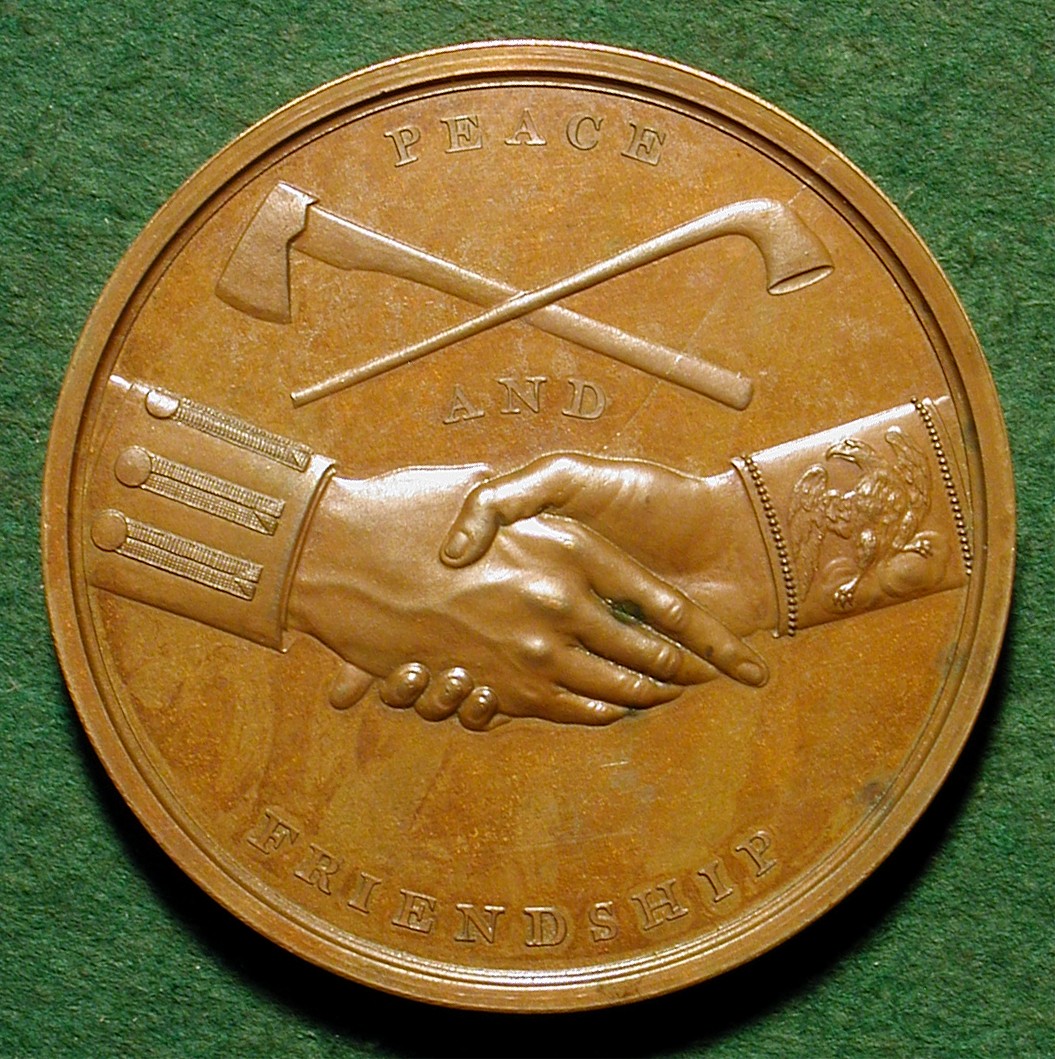|
THOMAS JEFFERSON INDIAN PEACE MEDAL SCOT, Robert: USA, 1801*, Bronzed Copper,
75 mm Thomas Jefferson (1743-1826) was the nation's first secretary of state (1789-1794), second vice president (1797-1801), and third president (1801-1809) of the United States of America. He is most noted for being the draftsman of the U.S. Declaration of Independence, the statesman responsible for the Louisiana Purchase, and the author of the Virginia Statute for Religious Freedom, which established freedom of religion and the separation of church and state, a document which Jefferson considered to be one of his proudest life accomplishments. *All of the Jefferson Indian Peace medals bear the date 1801, the year he became president. This specimen was struck from the original obverse and reverse dies, likely between 1861 and 1886. This is evidenced by the following die characteristics: On the original obverse die, the period between A and D is midway between the two letters while on the replacement die, it is closer to the A. On original reverses, the Aís have pointed tops while on the replacement die, the Aís have flat tops. In addition, the original reverse die has a die break that extends from the rim through the tomahawk head and ax handle to the hand on the right (Levine). Jefferson peace medals were made of silver or copper and sometimes pewter, and were struck in three sizes:101-105 mm; 75-77 mm; and 54-55 mm. The large silver medals were generally given to Indian chiefs. The medals were the work of Jacob Reich, who was employed by Robert Scot, the engraver for the United States Mint. (Belden) LINK to Medallic History of Slavery: Racial Oppression as Chronicled by Historical and Commemorative Medals(by Benjamin Weiss)
|
|

